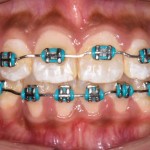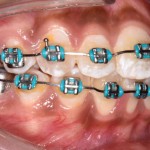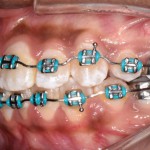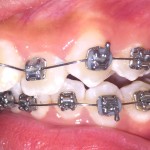Traditional metal wired braces are stainless steel and are sometimes used in combination with titanium. Traditional metal braces are the most common type of braces. These braces have a metal bracket with elastic (rubber band) ties holding the wire onto the metal brackets. The second most common type of braces are self ligating braces that do not require the need of elastic ties. Instead, the wire goes through the bracket. Often with this type of braces, treatment time is reduced, and requires fewer adjustments than traditional braces.
There are many claims coming from the companies and practices utilizing these brackets including: lower levels of friction resulting in more biological forces, fewer extractions and expanders, decreased treatment times, less discomfort, fewer broken brackets, fewer visits to the office, faster space closure, and fewer periodontal complications. These claims are great but what does the scientific literature say? Do self-ligating brackets possess some sort of magic that allows us to straighten teeth more quickly, with less pain, and better results?
Your teeth do now know what type of bracket is placed on them. In reality, every orthodontic system works. What you pay for is not the type of bracket or wire system that a doctor uses but rather their expertise in using the system. The difference lies in the doctor’s skills and interpretation of the aesthetic outcome and his or her ability to harness the technology to work for you. (taken from http://tdrortho.com/deciphering-the-truth-on-self-ligating-braces/)



